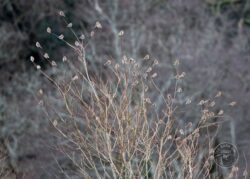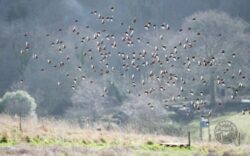December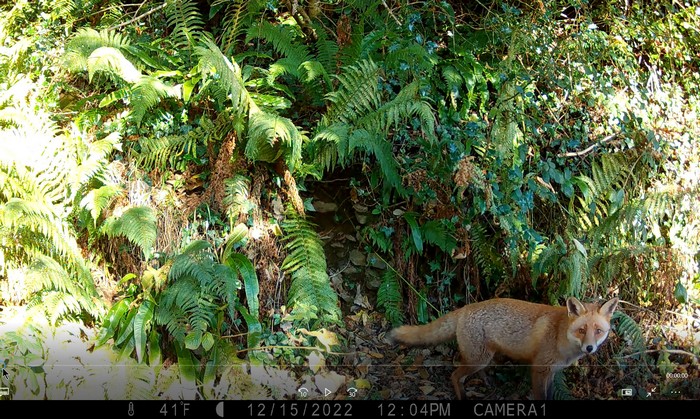
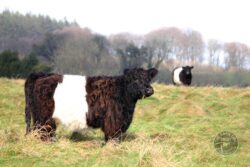 The first day of the month was dry and Matt showed Harry how to prune the apple trees in Forde Orchard and then marked out the area for the third Field Shelter.
The first day of the month was dry and Matt showed Harry how to prune the apple trees in Forde Orchard and then marked out the area for the third Field Shelter.
After last month’s almost continuous rain the first half of the month was almost dry, but temperatures dropped dramatically, with freezing temperatures overnight from the 7th. On the 8th there was 6-7mm of ice on the cattle trough in Kiln Close and ice on both the ponds. The trough in North Park had stopped filling, so we had to check the Kiln Close one daily and break the ice to ensure the cattle and the goats had water. Harry walked past the release aviaries in Kiln Close at 9:20am and a Barn Owl, probably Duke, flew out in the direction of the field shelter. This is the first time we have observed a Barn Owl using a release aviary that it wasn’t released from. Down at the ponds, Harry filled multiple holes in the stream bed with turf, and pulled rushes along the path side of the Flo Pond. The Barn Owl (Duke?) was spotted again in the Main Field at 15:57 perched on a thistle quadrat post.
 On the 9th 15-20 linnets were on the bird food crop. On the 11th we spotted a Roe Deer in the middle of the crop, this was unusual as they normally run off when they see people passing, but this one stayed put as we walked past with just its head peeping above the vegetation. 40-50 Chaffinch were seen in the hedge by the crop, with 1 Stonechat and 2 Redwing in the crop itself on the 12th when the temperature remained below freezing all day, having dropped to this winter’s low of 5.6°C at 5:30am.
On the 9th 15-20 linnets were on the bird food crop. On the 11th we spotted a Roe Deer in the middle of the crop, this was unusual as they normally run off when they see people passing, but this one stayed put as we walked past with just its head peeping above the vegetation. 40-50 Chaffinch were seen in the hedge by the crop, with 1 Stonechat and 2 Redwing in the crop itself on the 12th when the temperature remained below freezing all day, having dropped to this winter’s low of 5.6°C at 5:30am.
Harry and 3 volunteers cleared a large section of Blackthorn on the roadside edge in the Main Field on the 13th in preparation for the felling of the roadside trees affected by Ash dieback. One of the five Ash trees now has a clear space to be felled into the field. A Grey Heron flew over the Main Field. One was seen in the top of the Flo Pond, probably the same one, but this one seemed quite lethargic and when it did eventually fly off it was very slow, we wondered whether it might be starving. Two Fieldfares were spotted in the hedge of Forde Orchard and a Roe Deer in North Park. Overnight about 3cm of snow fell on the reserve.
 Our 2nd Winter Bird Walk of the season was on the 14th. The weather was bright and dry but bitterly cold with snow on the ground. Mateo and Harry took four visitors out for the morning and the species they saw included Blue Tit, Great Tit, Long-tailed Tit, Chaffinch, Goldfinch, Bull Finch, Linnet, House Sparrow, Dunnock, Wren, Blackbird, Robin, Mistle Thrush, Song Thrush, Redwing, Common Buzzard, Carrion Crow, Magpie, Wood Pigeon and Woodcock, many of which were feeding on the windfall apples in Forde Orchard. A trail camera set up on a well used path in Corner Wood caught images of a Red Fox on the 14th and 15th.
Our 2nd Winter Bird Walk of the season was on the 14th. The weather was bright and dry but bitterly cold with snow on the ground. Mateo and Harry took four visitors out for the morning and the species they saw included Blue Tit, Great Tit, Long-tailed Tit, Chaffinch, Goldfinch, Bull Finch, Linnet, House Sparrow, Dunnock, Wren, Blackbird, Robin, Mistle Thrush, Song Thrush, Redwing, Common Buzzard, Carrion Crow, Magpie, Wood Pigeon and Woodcock, many of which were feeding on the windfall apples in Forde Orchard. A trail camera set up on a well used path in Corner Wood caught images of a Red Fox on the 14th and 15th.
Both the ponds in the orchard still had a partial covering of ice on the 15th. Several small birds were darting around in the crop at lunchtime but too far away to identify. A Buzzard was seen flying very low over the crop and about a dozen individual Meadow Pipits flew up out of the rough grass as we walked around the field. Although the snow was beginning to melt there was still a good covering over much of the land. Harry and two volunteers had a fire in the Orchard and burned all the remaining piles of brash. A Red Fox was spotted in the morning running from the edge of the Bird Crop over to Corner Wood. The Trail cam picked up the Fox running in that direction and again around 12. On the 16th Pip and Harry worked with a volunteer to continue laying the next section of the North Park hedge. Corvid remains were found on the 20th on the roadside edge of the Main Field, its flight feathers bitten through, indicating Fox. Harry cleared Blackthorn on the roadside edge, making room for another Ash tree with Ash dieback, that is due to be felled. A Red Admiral butterfly was seen flying over the Main Field. On the 23rd 40 Linnet were counted on the bird crop. A Palmate Newt was seen in the Flo pond and a couple of Common Frogs.
The Met Office announced that 2022 was the warmest UK year on record. Here we recorded an annual Mean of 11.63°C. Our warmest day ever, 34.4°C recorded in July. We had 18 days with rain in December with a total of 296.8mm, 71.8mm (2.8”) fell on the 18th and our annual rainfall was 1,382.63mm (54.43” over 4.5 feet) almost half of which fell in November and December. The River Ashburn was in spate much of the last two weeks of the year and overflowing near the old cattle drink.
Our Trail cams were very busy over the Xmas break, we had one in Corner Wood which recorded both Badger and Foxes. Another on the long boardwalk on the Apprentice Path recorded Red Squirrel, Red Fox, Badger, Red Wing, Wood Mouse and Grey Heron.
November
The month began with rain. We recorded over 50mm (2”) of rain in the first 3 days of the month.  The grass on the paths is lush and overdue for mowing, but with rain every day for 23 days it hasn’t been possible to get it cut. Almost all the bare patches on the paths caused by the drought have now recovered and are green again.
The grass on the paths is lush and overdue for mowing, but with rain every day for 23 days it hasn’t been possible to get it cut. Almost all the bare patches on the paths caused by the drought have now recovered and are green again.
On the 2nd a Red Admiral Butterfly was seen on the Pennsland Lane edge of the wild bird food crop. Red Clover was flowering on the top of the path in North Park on the 3rd and a clump of Cornflower was flowering on the edge of the crop.
On the 4th, on a walk around the land with a local ecologist, we saw 2 Red Poll, a Skylark fly over and there were about 50 Linnets in the crop. We were delighted to discover that the Black Mulberry planted in the Orchard in March 2021, which we thought had died after being grazed off by deer, was alive.
 Photographer Tony came on the 9th and captured a Roe Deer in the crop, and (between 3-4pm), the released Barn Owl ‘Duke’ flying towards the open aviary where food is still being left for him – he veered away when he saw Tony. We also saw about 30 Linnets, with several Chaffinches in the crop and a Sparrowhawk, making them all very nervous. Whilst standing in North Park gateway by the Wildlife Tower, Duke returned, flying low over our heads and landing in the aviary.
Photographer Tony came on the 9th and captured a Roe Deer in the crop, and (between 3-4pm), the released Barn Owl ‘Duke’ flying towards the open aviary where food is still being left for him – he veered away when he saw Tony. We also saw about 30 Linnets, with several Chaffinches in the crop and a Sparrowhawk, making them all very nervous. Whilst standing in North Park gateway by the Wildlife Tower, Duke returned, flying low over our heads and landing in the aviary.
Staff and volunteers had a days hedge laying on the 11th and laid the next section of the North Park Hedge, approximately 15-20 metres. The Field Shelter in the main field is being regularly used for roosting by a Barn Owl, probably Duke, signs (poo) were photographed on the 13th.
On the 15th Harry and 2 volunteers burned up the Blackthorn left from the clearing by the roadside hedge in October. Nine University of Plymouth Student Union (UPSU) volunteers joined Harry on the 16th and moved the hedge laying brash to the Orchard ready for burning. This was burnt up on the 17th with two volunteers who joined Harry from Cornwall. Two Roe Deer were seen in North Park that day.
Nine University of Plymouth Student Union (UPSU) volunteers joined Harry on the 16th and moved the hedge laying brash to the Orchard ready for burning. This was burnt up on the 17th with two volunteers who joined Harry from Cornwall. Two Roe Deer were seen in North Park that day.
On the 18th our first Winter Bird Walk of the season was led by Matt and Pip and they saw approximately 50 Linnet and 30-40 Chaffinch in the bird crop, a female Sparrowhawk was seen a couple of times and a Buzzard. Later that day the cattle arrived for the winter grazing, 12 Belted Galloways.
 We had a great view of a female Roe Deer bounding through the crop at lunchtime on the 27th and Cornflowers and Fodder Radish was flowering in the crop. On the 29th we saw a Barn Owl at dusk flying over the main field towards Kiln Close.
We had a great view of a female Roe Deer bounding through the crop at lunchtime on the 27th and Cornflowers and Fodder Radish was flowering in the crop. On the 29th we saw a Barn Owl at dusk flying over the main field towards Kiln Close.
We recorded 347.1mm of rain in the month (our average November rainfall is 137.9mm) this is highest rainfall recorded in a month here in 17 years, the previous high was 308.5mm in Feb 2022. Our mean temperature was 9.8°C (average 8.9°C). After 28 days with rain the month ended with an almost dry day but the ground is saturated and the river high. However the Flo Pond is leaking badly again and the water level has dropped a few inches.
Thank you Tony Utting for providing some of the photos.
October
 A Clouded Yellow butterfly (a migratory European butterfly and a regular visitor to Britain) was seen between the crop and the Pennsland Lane hedge on the 2nd .
A Clouded Yellow butterfly (a migratory European butterfly and a regular visitor to Britain) was seen between the crop and the Pennsland Lane hedge on the 2nd .
Beautiful, but highly toxic Fly Agaric Mushrooms have appeared alongside the stream on the Apprentice path. A lover of Birch woodland, this fungus helps trees by transferring nutrients into their roots, but if eaten can cause hallucinations and psychotic reactions.
We had great views of a female Roe Deer running through the wild bird food crop on the 3rd. Harry pulled saplings and brush cut the brambles in the Bluebell patch in Corner Wood. On the 5th a Roe Deer was recorded on a Trail Camera crossing the river (see video). Another was seen in the crop again on the 6th and on the 7th we photographed an amazing collection of Fungi glistening in the sunshine on the fallen Beech tree along the Apprentice Path. Another Clouded Yellow butterfly and a Red Admiral were noticed enjoying the autumn weather on the 8th.
On the 9th a female Roe Deer was again seen running through the wild bird food crop. and the Fodder Radish is regrowing along the edge of the crop. A neighbour watched a Barn Owl for five minutes at 6pm and at about midnight we had great views of, probably the same bird, hunting over the top of the Main Field and the crop. On the 12th a lone Cornflower was flowering in the crop. At dusk on the 14th a Barn Owl was seen again by neighbours, in the field.
Another first for the LLP was a Weasel (Mustela nivalis), seen at lunchtime on the 15th by Mateo, he was sitting on the ground, and it ran out of the crop, around him and then back into the crop.  On the 16th about 30 Linnets were seen over the crop and on the 17th the new Fodder Radish plants were flowering. Pip spotted a Common Lizard running across track next to the orchid patch in Kiln Close.
On the 16th about 30 Linnets were seen over the crop and on the 17th the new Fodder Radish plants were flowering. Pip spotted a Common Lizard running across track next to the orchid patch in Kiln Close.
On the 19th 11 students from Plymouth University helped to cut back roadside edge Blackthorn, and cleared Brambles from the top stone wall in the orchard. A Wood Mouse was seen under corrugated sheet nearest the field shelter.
The following day, the 20th, a Field Vole was seen under the same corrugated sheet.
A Grey Heron was spotted in the river, from the Apprentice Path on the 21st it flew off over North Park towards the Orchard. Several Southern Hawker and Common Darters Dragon flies were still patrolling the Flo Pond on the 24th. Common Frogs were spotted around the ponds when Harry started clearing the steam between the ponds and pond edges and a Clouded Yellow Butterfly was seen near the solar panels.
On the 26th Matt and Harry found and plugged one of the Flo Pond leaks using turfs. Water started flowing down the stream bed, and then at certain points the water goes underneath the rocks, between the rocks and liner. More work is needed.
By the end of the month the height of the bird food crop had dropped substantially, and it was still dominated by Fodder Radish. The Corn Marigold which had been the other dominant plant earlier in the year, had died back almost everywhere except in the area where staff had been digging up their Potato crop. ![Llp common frog 04 [harry hingston] 241022 (a)](https://www.barnowltrust.org.uk/wp-content/uploads/LLP-Common-Frog-04-Harry-Hingston-241022-A-250x188.jpg) Here the Corn Marigold had taken advantage of the turned soil and there are lots of healthy vigorous young plants.
Here the Corn Marigold had taken advantage of the turned soil and there are lots of healthy vigorous young plants.
On the 30th owl dropping were found for the first time in the field shelter.
The mean temperature for the month was 13.1°C, exactly the same as October 2021, which is 0.8°C above our 17-year average here. We had 28 days with rain and recorded 166.2mm (6.54 inches) which is above our 17-year average of 122.68mm (4.82 inches) but significantly less than October 2021 when we recorded 210.4mm (8.28 inches).
September
The 1st of the month was overcast but it brought great views of a Kingfisher making its way up the river between the bridges on the Apprentice path. More Fox Moth caterpillars were seen on the mown paths and a Southern Hawker Dragonfly was recorded over the Flow Pond.
On the 2nd a group of volunteers from Ambios helped with the final thistle count and then began clearing the vegetation growing out of the lower wall in Forde Orchard.
We recorded 34mm of rain on the 4th , notable as we had just 45.8mm of rain in the whole of August.
On the 6th Harry started burning the cleared Blackthorn at the top of Kiln Close. He saw two Roe Deer: a male and a female, at the gate between Kiln Close and the Main Field. Two Field Voles were seen under the new corrugated sheet at the top of the main field on the 7th.
By the 12th a large number of Parasol Mushrooms had appeared in the rough grass above the Pole Box in the Main Field. There were also dozens of common Puffballs on the paths and a few Field Mushrooms. A Southern Hawker Dragonfly was seen flying through North Park and Common Darter Dragonfly over the Flo Pond. Hornets have built a nest in the Barn Owl provision in the Wildlife Tower and were seen flying in and out.
- Parasol Mushrooms
On the 13th Matt and Harry brush mowed around the Winter Bird Crop and erected electric fencing ready for the arrival of the cattle and on the 14th Harry strimmed the orchid patch and raked off arisings. On the 15th he finished burning the Blackthorn.
A vast amount of sawdust on the small boardwalk along the Apprentice Path drew attention to the new perfectly circular Woodpecker hole created on the dead standing Silver Birch with the bracket fungus on the 20th. Large quantities of sizeable Parasol Mushrooms and some Field Mushrooms were seen in the Main Field. There was a Slow Worm under the corrugated sheet next to the Winter Bird Crop and we were still seeing the occasional Fox Moth caterpillar.
On the 22nd Harry brush mowed and strimmed the top section of the orchard. The crop appears dominated by ripening Fodder Radish and gone-over Corn Marigold (neither of which was planted this year), however on a walk between the North Park hedge and the edge of the crop we saw flowering Chicory, Flax and ripe Millet and Triticale. There were also several small Sunflowers flowering further into the crop, one with a Small Copper butterfly sitting on it. A Clouded Yellow Butterfly was also seen.
A rehabilitated Barn Owl was released earlier in the month from the mobile aviary in North Park and whilst feeding it late at night on the 24th a female Roe Deer was seen lying under the coppiced Hazel in the Orchard. She stayed there, probably not realising she’d been spotted. Late on the 25th, again when feeding the Barn Owl, a Doe and a Stag were seen at the top of the Orchard. He was nervier than she was, and took off when he saw the torchlight, with the female following. Barn Owl pellets were seen in the Stock Dove provision at the back of the Wildlife Tower. The Hornets are still active in the Barn Owl provision on the other side and are very interested in torchlight. That evening we also saw a 12” Brown Trout in the Flo Pond.
A Roe Deer was running through the Main Field, from the taller telegraph pole across to a patch of Blackthorn on the roadside edge on the 30th and Harry finished the new fencing around the solar panels.
During September we had 17 days with rain, a total of 121mm, this is double our 17-year average of 61mm for the month. It was also a windier month than usual for September, with an average wind speed of 2.6mph compared to our 17-year average of 2.09mph. The mean temperature was slightly higher at 14.3°C, than the average of 14.1°C but significantly lower than September 2021 when it was 15.8°C. We recorded a high of 21.8°C (21.92°C) and a low of 6.6°C (6.46°C).
August

Bat Walk 11th August – Wildlife Tower
On the 1st, 25 Linnets were seen over the bird food crop. The bramble was cut around the Wildlife Tower on the 2nd, and on the 3rd a Small Heath butterfly was recorded on the path near the solar panels. A medium-large red fox was seen running across the most northern end of North Park to Corner Wood and a Southern Hawker dragon fly was over the Flo pond on the 4th. Lots of shattered unripe Hazelnuts were found under the trees in the Orchard and along the Pennsland Lane hedge at the beginning of the month (probably Squirrels). There were 10+ House Martins hawking over Top Field and crop, along with a couple of Swallows on the 5th, and on the 9th 20+ Swallows were hunting for insects over the crop. At least 30 dwarf Sunflowers could be seen poking through the crop and four Bumble Bees were seen on one flower head.
By the 11th the Fodder Radish was beginning to ripen and the first flush of Corn Marigolds were dying back. The ground is incredibly dry and hard because of the drought, with some of the trees turning colour and starting to lose their leaves. The grass on the paths is all brown and crispy and all of the long grass is golden brown. Newly fledged Sparrow Hawks (at least 2) were seen, mainly in the Larch plantation but briefly moving into Corner Wood area. Predated Jay feathers were found in Corner Wood. During a Bat Walk, led by Louise Wooley on the evening of 11th, Common Pipistrelle, Daubenton’s, Common Noctule, Barbastelle and Brown Long-eared Bats were recorded and Lesser Horseshoe Bat droppings were found in the Wildlife Tower.
On the 12th Linnet numbers were climbing, with 30-40 seen and multiple Common Darter Dragon flies (Sympetrum striolatum) were observed over the Flo Pond along with a Large Red Damselfly (Pyrrhosoma nymphula). On the 13th the goats, Annie and Clarabell, were missing from North Park but were eventually discovered at the bottom of Forde Orchard, where fortunately they hadn’t done any damage. A metal staple had worked out of the gate between the two areas which facilitated in the goats’ escape. They were returned to North Park and the gate tied up. A medium sized tree was down on the Apprentice Path just before the first bridge.
Harry replaced the staple on the 15th and cleared the downed tree. A Roe deer was seen in Kiln Close; it ran into the Main Field. Mateo observed a Green Woodpecker fly from the ground to the tall telegraph pole in Top Field, and a second sighting of a Green Woodpecker on the mown grass on the path between North Park and Top Field. A Kestrel was seen hovering over the Top Field. After an extremely dry July and drought conditions, the first rain of the month arrived on the 15th, just 0.6mm!
A Grey Wagtail was seen on the Kingfisher Wall in the Flo Pond and Harry started clearing the Blackthorn patch in Kiln Close on the 16th. We recorded 13mm of rain on the 16th and 20.6mm on the 17th, too late for most of the Corn Marigold which now has no flowers but the grass on the paths is starting to recover. Many of the leaves on the trees are changing to their autumn colours and losing their leaves as a survival measure, especially the Silver Birch and Hazel.
A second tree on the Apprentice Path had been affected by the one that came down earlier in the month, this one was hanging over the Boardwalk and was cleared by Harry on the 18th. A male Sparrow-hawk was seen flying low and fast along the hedge by the crop. Linnet numbers have increased to 60+, two juvenile & one adult Buzzard were seen flying low over the Top Field and Swallows and House Martins were hawking insects over the crop.
 By the middle of the month the Sloes were ripe (unusually early), a lot of the Hazelnuts and Blackberries had also ripened. On the 23rd Harry strimmed and raked half the Orchid patch in Kiln Close. A large Rabbit ran out of the crop into the Pennsland Lane hedge., this is quite unusual as although there are Rabbits around the area we rarely see them on the LLP.
By the middle of the month the Sloes were ripe (unusually early), a lot of the Hazelnuts and Blackberries had also ripened. On the 23rd Harry strimmed and raked half the Orchid patch in Kiln Close. A large Rabbit ran out of the crop into the Pennsland Lane hedge., this is quite unusual as although there are Rabbits around the area we rarely see them on the LLP.
On the 25th a young male Roe Deer was seen in North Park running back and forth between the Corner Wood gate and the gate into the main field, it eventually leapt over the hedge into Pennsland Lane. A Common Darter Dragonfly (Sympetrum striolatum) was recorded flying over the Flo Pond. The fungi season had begun with a Pleated inkcap (Parasola plicatilison) on the path in main field, False Puffball (Reticularia lycoperdon) in Corner Wood and a couple of Field Mushrooms (Agaricus campestris) on the path above the office.
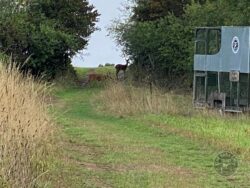 A male and female roe deer were seen together on the 26th passing through Kiln Close to Main Field. A Rabbit ran out from the Field shelter in the Main Field. More pleated inkcaps were spotted on the path near the Flo Pond. A dozen or so Fox Moth caterpillars were seen on the paths. Harry replaced the corrugated sheets around the LLP, one under the short telegraph pole in the Main Field, one on the wire stay between the Pennsland Lane gate and the Field shelter, one on the edge of the bird crop next to the solar panel wooden boarding for the electric fence. These provide shelter for Field Voles and other small mammals, and Slowworms.
A male and female roe deer were seen together on the 26th passing through Kiln Close to Main Field. A Rabbit ran out from the Field shelter in the Main Field. More pleated inkcaps were spotted on the path near the Flo Pond. A dozen or so Fox Moth caterpillars were seen on the paths. Harry replaced the corrugated sheets around the LLP, one under the short telegraph pole in the Main Field, one on the wire stay between the Pennsland Lane gate and the Field shelter, one on the edge of the bird crop next to the solar panel wooden boarding for the electric fence. These provide shelter for Field Voles and other small mammals, and Slowworms.
Several Field Voles were seen under the wooden boarding for the solar panel on the 30th. Harry and volunteer Jonny finished clearing the Blackthorn patch in Kiln Close where the 2nd Field Shelter is planned.
 On the 31st as we walked up the path from Corner Wood we noticed lots of ripe Sloes on the ground. A little further on a medium size Rabbit ran out of the crop and down the path past us veering off into the hedge.
On the 31st as we walked up the path from Corner Wood we noticed lots of ripe Sloes on the ground. A little further on a medium size Rabbit ran out of the crop and down the path past us veering off into the hedge.
The mean temperature for the month was 18.5°C, 2.6°C above the 17 year average here of 15.9°C. We had 45.8mm of rain over 9 days, average rainfall for August is 81.12mm. The river is lower than usual for the time of year but the rain has turned the paths and surrounding land green again after the brown at the beginning of the month.
July
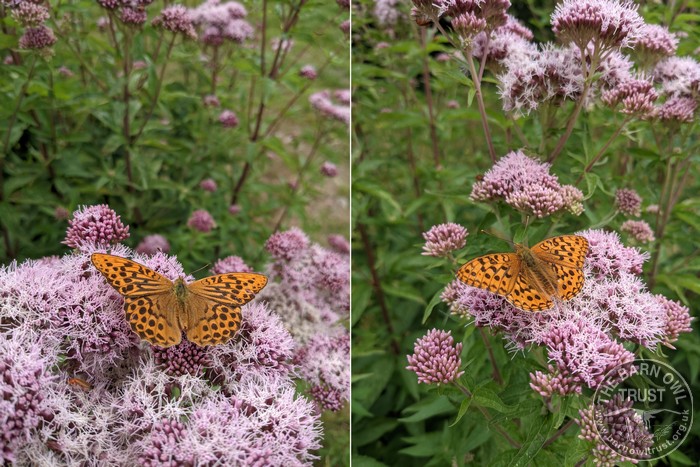
Silver Washed Fritillary (left) and High Brown Fritillary (right)
By the 1st of the month the Fodder Radish in the bird food crop was knee high and the whole area appeared white with its flowers. The first Ringlet butterflies were starting to appear along with Marbled Whites. On the 5th the Pink Mallow and the Hedge Bedstraw in the grassland were in flower, along with huge patches of Birdsfoot Trefoil and Corn Marigold was starting to flower on the edge of the crop. A dense patch of White Clover on the new path in North Park was positively humming with Bees.
A student from Exeter University placed 20 Dormouse tubes in the Pennsland lane hedge on the 6th. These tubes have a charcoal strip which transfers onto the feet of any small mammals wandering through the tubes and then onto white paper. Our new intern Harry cleared the water trough and gate posts in Kiln Close, he saw a Buff Arches moth next to trough. The most northerly Almond tree in the Orchard (planted over the winter) had 3 nuts on. We had perfect weather for an evening Butterfly Walk with 4 visitors.
20+ House Martins were seen over the field on 7th and on the 8th large quantities of Red Solider beetles (Rhagonycha fulva) were recorded on Rough Chervil (Chaerophyllum temulum) next to Pennsland lane. A male Emperor dragonfly (Anax imperator) was seen patrolling over the Flo Pond and a Golden-ringed dragonfly (Cordulegaster boltonii) was seen on the Wibbly Wobbly path. During the afternoon a Butterfly Walk with 5 visitors saw at least 50 Marble White, 150 Meadow Brown, 10 Gatekeepers, 100 Ringlets, 4 Commas, 75 Small Skippers, 10 Silver-washed Fritillary, 20 Six-spot Burnet moths, 1,000 common Red Solider beetles, 1 Small Tortoiseshell and a Kingfisher was heard on the Ashburn by the top bridge. Another Butterfly Walk for visitors on the afternoon of the 9th saw the same species.
A Giant Horntail (Urocerus gigas) was seen near the Holly hedge and a Southern Hawker dragonfly (Aeshna cyanea) was patrolling over top pond on 11th. A Peregrine Falcon was seen flying fairly low over Top Field, carrying prey on the 12th.
On the 18th Harry removed dead Gorse behind the wildlife tower and on the 22nd he, Mateo and a volunteer bashed Bracken for four hours and dealt with 30% of the total length of roadside boundary. In the afternoon Harry started clearing the stone wall below hospital aviary. The Exeter University student checked the Dormouse tubes and found no evidence of use.
On the 24th we found Froglets in the grass beside the ponds. The path to the boardwalk in the Orchard was strimmed on the 25th and the first Linnets of the season were recorded flying out of the crop which is now looking green and yellow and full of Fodder Radish seeds and Corn Marigold flowers. A few small Sunflowers can be seen fighting their way through these dominant plants and the occasional blue Cornflowers, Wheat, Barley and Triticale can be seen along the edges.
A Grey Heron was seen passing over the woodland behind North Park and a Beautiful Demoiselle dragonfly was recorded over the Flo Pond on the 26th . The Dormouse boxes were all checked by Tony, our licenced volunteer, no Dormice were present but there was a family of Wood Mice with young in one of them. We also recorded another first for the LLP when Pip saw (and took photos of) High Brown Fritillary on Hemp-Agrimony in the Orchard! Half a dozen Swifts were seen flying overhead and the first Sunflower was flowering.
Practical work on the 27th included bracken bashing around the solar panels and removal of fencing. The clearing of the stone below the hospital aviary was completed. More Sunflowers were flowering in the crop and 20+ Linnets feeding in the crop. More Bracken was topped by the tractor on the 28th.
Our highest ever temperature was recorded on the 18th at 34.4°C, the lowest recorded during the month was 8.1°C and the mean for the month was 18.7°C – more than 2°C above the 17 year average. 18.7°C was also recorded as the mean in July 2006 although the high then was 28.2°C. We had just 8.4mm of rain over 7 days in the month compared to an average here for July of 66.52mm. This is the lowest rainfall for the month recorded here since 2006 when we began keeping records.
- Burnet Moth
- Marbled White
- Painted Lady
- Comma
- Wall Brown
- Small Tortoiseshell
- Ringlet
- Peacock
- Meadow Brown
June
- Bridge demolition
- Bridge materials arrive and long boardwalk underway
- Replacing the Top Bridge
- The finished Top Bridge
- Marking out the Field Shelter
- Marking out the Field Shelter
At 9:30pm on the 2nd a Barn Owl was seen hunting over the top of the field three times. On the 4th two Skylarks were flying together over the Airstrip.
On June 6th we had 27 Western Power Distribution Apprentices and their trainers arrive for a four-day community project with us. Despite difficulties with deliveries of materials and transport they dismantled the two brides and three board walks built by their colleagues in 2010 and rebuilt them. They also prepared the ground for the first of the three Conservation Field Shelters we are planning to build in each of the three different grazing areas of the land.
On the 14th a Six Spot Burnet Moth was seen. On the 18th a Kingfisher was spotted as a flash of blue flying off from the Ash Tree near the Flo Pond.
By the 20th the wild bird crop was 2’ tall and the Fodder Radish was flowering. Despite leaving Corn Marigold and Fodder Radish out of this years seed mix these plants are really prolific. We saw the first Marbled White Butterflies hatch on the 21st and a Small Skipper was seen during the Thistle count on the 21st.
Daily sightings of Buzzards, and Sky Larks were heard singing throughout June. Brown Trout are regularly being seen in the Flo Pond.
We had perfect weather for our Mid-Summer Solstice evening walk on the 21st with 15 people. On an evening walk on 22nd a Roe Deer was seen in the bird food crop adjacent to the North Park hedge. By the 23rd the crop area was white with flowering Spring Linseed and the Hedge Bedstraw was starting to appear in the rough grassland and a Roe Deer was seen again the crop, this time near the Crossroads, it was heading towards North Park. A Buzzard flew out of the Pennsland Lane hedge just above the North Park gateway and landed on the tall pole in the centre of the field where it sat for a while before heading off to the tall pine trees on the other side of Pennsland Lane.
30+ House Martins flying over the field on 25th, on the 26th 5 Swifts were seen with more House Martins feeding on insects over the rough grassland. The Brown Bent (grass) was starting to turn purple and a few knee-high Sunflowers were spotted in the crop.
On the evening of the 29th there were two sightings of a Barn Owl at about 10pm. One hunting and one commuting, heading from Forde Orchard over Kiln Close before it disappeared from sight.
We recorded our hottest June day to date on the 17th – 28.1°C, (previous high 27.6°C, in 2017) but the mean temperature for the month was 14.5°C just below our June average of 14.63°C. We had 72.8mm of rain over 14 days.

May
Some of the small bird boxes were checked on the 2nd: 9 were occupied by Blue Tits, 6 by Great Tits, 2 Nuthatch, 1 Pied Flycatcher, and a Mandarin Duck was found on eggs in the duck box near the abstraction pool. Later that day the male was seen on the Flo Pond nearby. A Barn Owl was seen in the Kestrel compartment of the wildlife tower on the same day. It flew out, perched in a tree for a bit, and then flew off.
On the 4th, the female Mandarin Duck was on the Flo Pond with several ducklings, the first confirmed breeding on the site.
By the second week of the month we could see seedlings germinating in the bird crop area. Interestingly, Fodder Radish and Corn Marigold, neither of which were sown this year, were the most prominent.
Siskins were heard singing in the remnant hedge part of Kiln Close on the 19th. The Skylark was heard singing on the west side of the airstrip on the 20th. Three small fish were also seen in the river in the abstraction pool and the first Dog Rose of the year was seen flowering on the top edge of Corner Wood. On the 21st the Skylark was heard again and a Sparrow Hawk was seen chasing a Mistle Thrush towards the bird food crop. A great view of the Skylark on the 23rd which is now being heard every day – it was seen landing in the long grass near the airstrip after an impressive song flight. The Guelder Rose (Viburnum opulus) was flowering on the Orchard hedge bank.
On the 26th we were startled by a Buzzard flying out of the Pennsland Lane hedge just over our heads. It had obviously been perching out of sight very low in the hedge and was disturbed as we walked past.
The Sorrel was in full flower, turning the airstrip from Buttercup yellow to red.
Mayflies were seen dancing in the early evening sunshine on the 27th above the pool in the river by the abstraction point. Four small fish, (probably Brown Trout) were spotted there. One of the Dormouse boxes in the Pennsland Lane hedge had lost its lid, no sign of use. The Long Path was covered in Buttercups.
On the 29th the paths were mown in preparation for the Western Power Apprentice Community Project next month. By the end of the month the wild bird food crop area was looking really green.
The mean temperature for the month was 12.4°C, warmer than the 17 year average here (11.8°) although it often didn’t feel like it, possibly because the wind direction was frequently northly or easterly. We had 15 days with rain (average for May 15.6) and a total of 58.2mm, less than the 73.5mm average.
April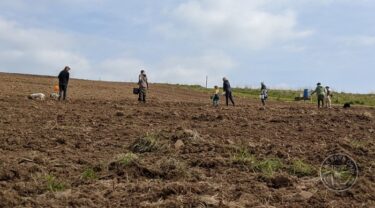
On the 6th Annie and Clarabell (the goats), who over the winter had free range over all the fields, were restricted to North Park and the electric fence around the bird food crop was taken down. The brash from the hedge laying on the crop side of the North Park hedge was burnt up. At least 50 Linnets are still being regularly seen and there are still seeds to be found in the crop.
The two ‘Ingrid’ Almond trees in the Orchard have produced delicate pink blossom, and the Plum trees and Bullous have been flowering, along with the Blackthorn in the hedgerows. Primroses are flowering in North Park and Corner Wood.
Low temperatures at the start of the month, with a mean of 7°C (9.15°C) before 10th and two nights with temperatures of > -1°C.
On the 10th some of the apple trees in the Orchard were starting to come into leaf and 40+ Linnets were seen over the crop. The first Bluebell and Herb Robert flowers were seen in Corner Wood.
The last of the hedge laying brash was burnt up on the 13th and mowing of the crop area began and continued on the 14th. There was a huge amount of grass there and after mowing it looked rather like our neighbour’s pasture. By the 15th there was a clump of Bluebells in full flower above the Oakley Pond in the Orchard. Tadpoles could be seen swimming in the Oakley Pond but not a single one was visible in the Flo Pond. We presume the Brown Trout and Mandarin Ducks feasted on them. However, on the 20th we did spot the first recorded Toad spawn on the edge of the Flo Pond.
 We have been regularly seeing Black Oil-Beetles on the path in Corner Wood this month and also spotted one on the mown path in North Park. Oil Beetles have been identified as priorities for conservation action through the UK Biodiversity Action Plan – meaning urgent work needs to be done to conserve them and their habitats. Oil Beetles have an intimate relationship with Solitary Bees and are therefore dependant on the health and diversity of wild bees. We have reported our sightings to Bug Life.
We have been regularly seeing Black Oil-Beetles on the path in Corner Wood this month and also spotted one on the mown path in North Park. Oil Beetles have been identified as priorities for conservation action through the UK Biodiversity Action Plan – meaning urgent work needs to be done to conserve them and their habitats. Oil Beetles have an intimate relationship with Solitary Bees and are therefore dependant on the health and diversity of wild bees. We have reported our sightings to Bug Life.
On Saturday 23rd we had our first walk of the year with 10 visitors, 8 of whom were first timers. We were blessed with perfect weather and amongst other things we saw Black Oil-Beetles in Corner Wood, a pair of Stock Dove fly out of the Wildlife Tower and had great views of a Skylark singing overhead as we walked down the Long Path. The Bluebells and Greater Stitchwort in Corner Wood looked magnificent and the patch of Greater Stitchwort at the top of the land is expanding every year.
Using our donated plough on the 20th, 21st and 25th the bird food crop area was ploughed up ready for harrowing and then seeding. During the ploughing up to 100 Herring Gulls and 1 Lesser Black-backed Gull, 4 Buzzards, 20 Stock Doves and 4 Pied Wagtails were recorded. The harrowing was started on the 26th and continued on the 27th.
The Early Purple Orchids growing in the patch in Kiln Close were counted on the 27th and there were at least 66.
On the 29th we broadcast the seed on the Winter Bird Food Crop area, a 2m nectar strip was sown along the south side – Common Poppy, Corn Cockle, Cornflower and Corn Chamomile, while most of the area was sown with a mix of Triticale, Spring Barley, Dwarf Sorghum, White Millet, Spring Linseed, Japanese Millet, Red Millet, Gold of Pleasure (a member of the Mustard family) and Dwarf Sunflower. We didn’t add Fodder Radish or Corn Marigold to the mix this year as they were so dominant last year and we expect them to have self-seeded. The seeds were harrowed in afterwards, attracting over 40 Herring Gulls and up to 20 Stock Doves were seen there later.
The highest temperature recorded during the month was just 14.9°C (18.7°C 17-year average) and the lowest -1.1°C (0.25°C) with a mean temperature of 9.1°C (9.7°C). We had 24.2mm rain (52.91mm) over 10 days.
March
Plymouth Students visited on the 2nd and burnt up a lot of the Blackthorn previously cleared from the roadside hedge to encourage Brown Hairstreak butterflies. Unfortunately it was a damp and drizzly day. Bluebells leaves are starting to appear in Corner Wood and along the Apprentice Path.
By the beginning of March, the visiting Mandarin Ducks had decimated most of the Frogspawn in both ponds. They were not being seen every day but were on the Flo Pond on the 4th March. They are amazingly steady when people and dogs walk past. 3 large Brown Trout were seen together in the Flo Pond.
On the 5th just before dusk, two ducks were seen flying up the valley, in silhouette they looked like Mallards, shortly afterwards the Heron flew over. A little later the Heron was on the pond at dusk. It was there again late morning on the 6th. More Primroses were seen along the Pennsland Lane hedge in North Park and the first Blackthorn flowers were seen. There was also a large flock of Linnets singing in the large Ash tree by the orchard.
9th March 50 Linnets flying over the crop, while staff and volunteers continued hedge laying on the North Park hedge. More progress has been made this winter than for several years. Annie and Clarabell (the goats) have really enjoyed the company and browsing on the brash.
On a midday walk on the 10th we were treated to blue sky and sunshine and the wind had dropped. The Daffodils in the Orchard are in full flower and the Heron flew off from the island in the Flo Pond. 3 large Brown Trout were seen in the slightly stirred up water and a few tadpoles were spotted along the edges of the Flo Pond. There were more seen in the Oakly Pond, the Mandarin Ducks probably hadn’t spent as much time there. The Gorse on the rewilding slope by Corner Wood is starting to flower. We are regularly seeing at least 3 female Pheasants in the bird food crop and Meadow Pipits flying up from the rough grassland. Lots of bird song in the hedges and trees including a large flock of noisy Linnets who took off over our heads: 200+. Blackthorn flowers were noticed on the north side of the Kiln Close hedge. A Great Spotted Woodpecker has been heard regularly drumming all month.
The Woodpecker box near the top bridge in Corner Wood has been used for many years by Nuthatches: on the 11th we noticed that they are thinking about breeding there again. They’ve replastered the entrance hole with mud again. On the 12th the Hawthorn in the North Park hedge started coming into leaf and the Celandines were out in force at the top of the field by the Holly hedge. Another first for the LLP on the 13th, when 2 Herons were seen at the same time flying up from the Flo Pond and later on the same walk, a Roe Deer was seen running across the field from the roadside polebox area.
The first Brimstone Butterfly of the year was seen in North Park flying towards Corner Wood on the 14th and there was a Roe Deer in the bird food crop. It was a repeat performance on the 15th with another Brimstone sighting in the same place and a deer seen in the crop again. An inspection of the crop showed there is still a lot of seed remaining: still seeing 100+ Linnets most days.
The first Chiffchaff was heard in North Park on the 17th and the Spindle was coming into leaf. A Peacock Butterfly was seen on the 18th, 5 Brown Trout were spotted in the Flo Pond, the largest about 12” long and in North Park the grass was full of Celandines. First Red Campion was in flower and the first Skylark of the year heard on the 21st. Another Chiffchaff was heard near the polebox in the roadside hedge on 22nd whilst we were still hearing the one in North Park. By the end of the month the grassland near the Holly hedge was dotted with Celandines.
On the 30th we had great views of a large Roe Deer mid-afternoon. It saw us and took off along the roadside hedge towards the polebox, went through the hedge into Kiln Close and then came back over the hedge into the main field near the solar panels and then ran right across the top of the field, disappearing near the Holly hedge.
The new weather station recorded a mean temperature of 7.9°C for the month (17-year average 6.73°C) with a high of 17.2°C (15.3°C) and a low of 1.1°C ( -0.7°C). We had 9 days with rain totalling 56.2mm (94.96mm) and an average wind speed of 2.8mph, with a gust of 35mph recorded on 12th.

Hedge laying North Park March 2022
February
Hear 500 Linnets on the Barn Owl Trust reserve.
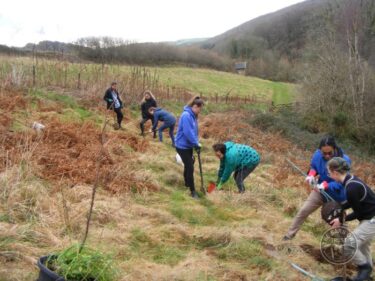
Plymouth students tree planting
On the 2nd, Matt (SCO*), Pip, (ACO*) and volunteer Rick planted 10 trees in the rewilding area by Corner Wood, 2 Almond trees (Ingrid) in the Orchard and then cut back Blackthorn along roadside boundary below the polebox. There were about 250 Linnets and 20-30 Chaffinch in the crop.
The following day, Mateo (CO*), Pip and 6 Plymouth University Student volunteers planted another 16 trees and cut back more Blackthorn.
On the evening of the 5th there were unusually no frogs visible on the Flo Pond. However when we shone a torch further up the pond we discovered why. Two ducks, probably Mandarins flew up from the water and disappeared in the dark.
On the 8th Mateo went to strim the Orchid patch but found rosettes up already. He counted 6 but they were still very small and presumably there were more still covered by grass.
 A new weather station was installed on the 9th and on the 12th the first Primrose and Celandine were seen flowering on the path in Corner Wood.
A new weather station was installed on the 9th and on the 12th the first Primrose and Celandine were seen flowering on the path in Corner Wood.
On the 14th a pair of Mandarins were seen on the Flo Pond. They were there again on the 15th, 16th 17th and on the 18th during Storm Eunice. On the 18th we also discovered that the mobile aviary (where we had been providing food for the Barn Owl released at the beginning of November) had blown over. It was pulled up with the tractor and moved to a more sheltered spot. You can see a video of the recovery here. The owl came back in for food that evening.
The Mandarin Ducks were absent from the pond when we visited on the 19th, but back on the 20th and 21st when they were seen sheltering from Storm Franklin in the lee of the island.
A few of the Snowdrops planted in the Orchard in 2015 came up this year and by the end of the month they were going over. Some of the Daffodil bulbs planted at the same time are starting to bud. We planted them around every tree in the Orchard but most of them disappeared without flowering.
We don’t have all the data for this month as the weather station wasn’t working properly but during Storm Eunice we did record a 45mph gust of wind and during Storm Franklin 50mph. Our previous highest gust was 49mph in January 2018.
* SCO – Senior Conservation Officer, ACO – Assistant Conservation Officer, CO – Conservation Officer.
January
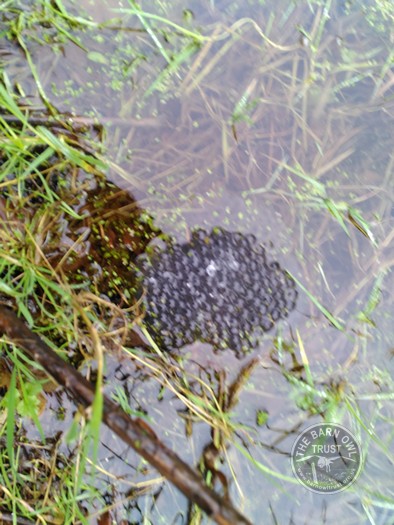
The first Frogspawn arrived on the 4th, in time for the first frost of the year
The month began with unusually mild temperatures (mean of 11.6°C) for the first three days (the average normal January mean temperature is 6.19°C). However, this changed on the 4th with the mean dropping to 5.1°C and a heavy frost overnight into the 5th.
The first frogspawn of the year was seen in the Oakley pond on the 4th. The earliest date recorded since 2008.
Frog Spawn dates
| 4th January 2022 | 24th January 2014 |
| 14th January 2021 | 30th January 2013 |
| 8th January 2020 | 19th January 2012 |
| 20th January 2019 | 4th February 2011 |
| 21st January 2018 | 9th February 2010 |
| 30th January 2017 | 28th January 2009 |
| 24th January 2016 | 23rd January 2008 |
| 27th January 2015 | 22nd January 2007 |
The mean date prior to this year was 24th January.
On the 6th 30+ Linnet and the same number of Chaffinch were seen in and around the bird crop at lunchtime and 1 Reed Bunting was heard. On the 10th the top of the field was covered in low cloud and as the sun tried to break through, the raindrops on the rough grass tussocks glistened like jewels. A flock of 60+ Linnets were seen on the 11th and two female Pheasants emerged from the crop.
More Frogspawn had arrived in the Oakley Pond by the 12th and there were also several patches in the Flo Pond. The morning brought a frost and this was the first ‘blue sky’ day of the year. Several small flocks of Linnets were seen over the bird food crop and in the hedgerows, and a flock of 60+ were singing in the large Ash tree by the Holly hedge which could be heard 300metres away. As we approached they flew off towards the crop in several smaller groups.
On the 13th two female Pheasants flew up out of the crop and several small flocks of Linnets were seen. The Heron was seen flying up from the Flo Pond and did a slow circuit of the valley: it is visiting regularly as evidenced by the large number of white droppings on and around the pond. Two separate flocks of approx. 40 and 60 Linnets were seen over the crop on the 14th and on the 15th about 30 were flying over and glittering in the late afternoon sunshine. Corn Marigolds were still flowering in the crop on the 15th and in the evening the 8” Brown Trout was seen in the Flo Pond while numerous Frogs sat amongst the spawn in both ponds, their white throats and eyes reflecting in the torch light.
Like in December, a lot of the days have been very grey and overcast, but on the 19th as the sun tried to break through, a rainbow appeared over the land. Two separate flocks of Linnets were seen over the crop, 30 and 40+. On both the 23rd and 24th a large flock of Linnets were perched in the large Sycamore tree by the Orchard gate at about 8am singing their hearts out, and on the 24th 300-400 were flying over the crop and were seen for some time, wheeling around in the air and occasionally settling in the crop, the hedgerows and even in the long grass.
![Llp hedgelaying [david ramsden] 290122 (a)](https://www.barnowltrust.org.uk/wp-content/uploads/LLP-hedgelaying-David-Ramsden-290122-A-250x141.jpg) Winter Bird Walks took place on both the 14th and 21st of the month. More hedge-laying of the North Park hedge on the 25th and 400+ Linnets and large numbers of Chaffinch were seen whilst this was happening.
Winter Bird Walks took place on both the 14th and 21st of the month. More hedge-laying of the North Park hedge on the 25th and 400+ Linnets and large numbers of Chaffinch were seen whilst this was happening.
Lots of Frog activity mid-afternoon on 27th in both ponds, so we went back during the evening in torchlight and had great views of them. Expecting lots more frogspawn soon despite the drop in temperature this evening. A cold clear starry night. Approximately 60+ Linnets over the crop during walks on the 26th and 27th. More frogspawn did arrive and on the 30th the Heron was seen flying off the ponds again and Tony Utting spent the morning photographing the Linnets.
Oddly, we recorded just one day with rain during the month with a total of 6.2mm – we then discovered that our weather station had stopped recording rain data sometime during the month. Data from a local person showed 57mm of rain in the month just 39% of our 16 year average. Across the UK the Met Office reported 50% of average January rainfall.
The mean temperature was 7°C and across the UK this was recorded as the sunniest January ever, however, here we had less sunshine than usual as we were swathed in low grey damp cloud for much of the month.
- Wildlife Diary 2024
- Wildlife Diary 2023
- Wildlife Diary 2022
- Wildlife Diary 2021
- Wildlife Diary 2020
- Wildlife Diary 2019
- Wildlife Diary 2018
- Wildlife Diary 2017
- Wildlife Diary 2016
- Wildlife Diary 2015
- Wildlife Diary 2014
- Wildlife Diary 2013
- Wildlife Diary 2012
- Wildlife Diary 2011
- Wildlife Diary 2010
- Wildlife Diary 2009
- Wildlife Diary 2008
- Wildlife Diary 2007
- About our Wildlife Diary
- About the LLP wildlife haven
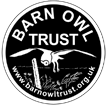
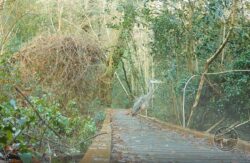

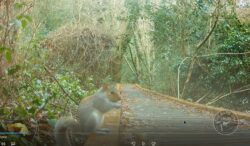

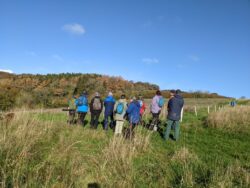
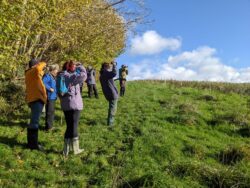
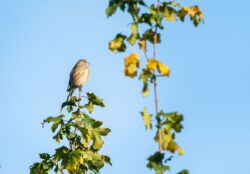
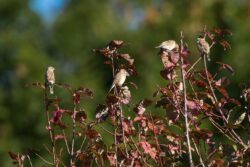



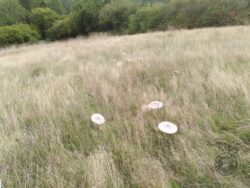
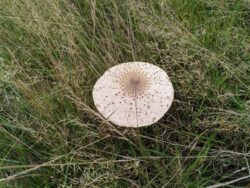
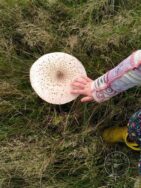

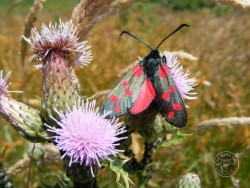
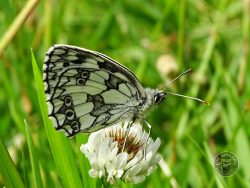
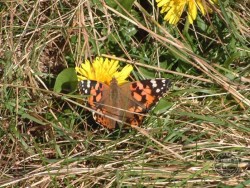
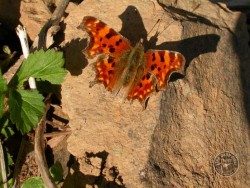
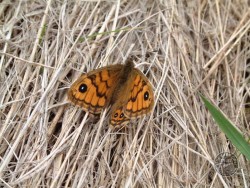

![Llp butterfly ringlet [david ramsden] 150815 (a)](https://staging.barnowltrust.org.uk/wp-content/uploads/LLP-butterfly-Ringlet-David-Ramsden-150815-A-250x188.jpg)
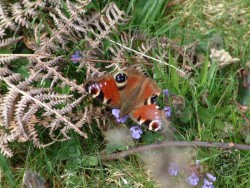
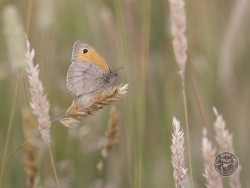
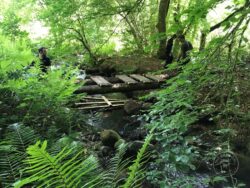
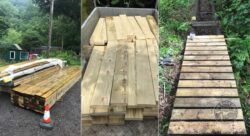

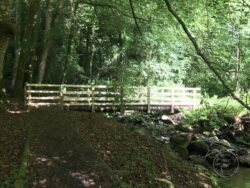
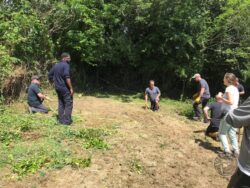

![Llp mandarin duck 1 [david ramsden] 280415 (a)](https://staging.barnowltrust.org.uk/wp-content/uploads/LLP-Mandarin-Duck-1-David-Ramsden-280415-A-250x188.jpg)
![Llp mandarin duck 2 [david ramsden] 280415 (a)](https://staging.barnowltrust.org.uk/wp-content/uploads/LLP-Mandarin-Duck-2-David-Ramsden-280415-A-250x188.jpg)
![Mandarin duck llp pond 1 [marianne bryan] 200513 (a)](https://staging.barnowltrust.org.uk/wp-content/uploads/Mandarin-Duck-LLP-pond-1-Marianne-Bryan-200513-A-250x188.jpg)


![Llp bird food crop buzzards 2 [david ramsden] 250422 (a)](https://staging.barnowltrust.org.uk/wp-content/uploads/LLP-Bird-Food-Crop-buzzards-2-David-Ramsden-250422-A-250x169.jpg)
![Llp bird food crop pied wagtail [david ramsden] 250422 (a)](https://staging.barnowltrust.org.uk/wp-content/uploads/LLP-Bird-Food-Crop-pied-wagtail-David-Ramsden-250422-A-250x155.jpg)
![Llp bird food crop gulls 2 [david ramsden] 250422 (a)](https://staging.barnowltrust.org.uk/wp-content/uploads/LLP-Bird-Food-Crop-gulls-2-David-Ramsden-250422-A-250x135.jpg)
![Llp bird food crop stock doves [david ramsden] 250422 (a)](https://staging.barnowltrust.org.uk/wp-content/uploads/LLP-Bird-Food-Crop-stock-doves-David-Ramsden-250422-A-250x121.jpg)

